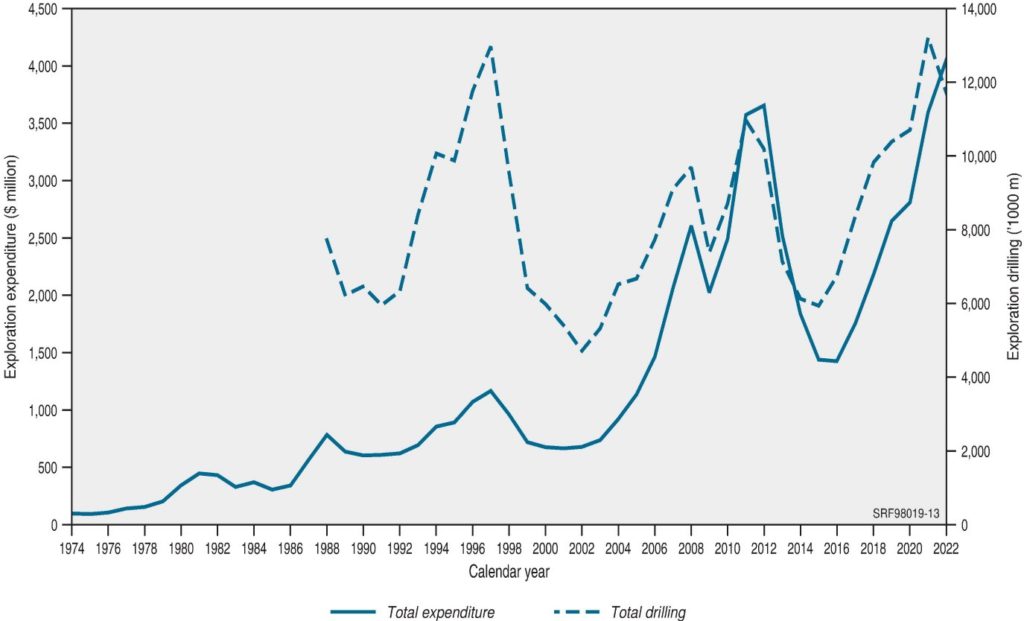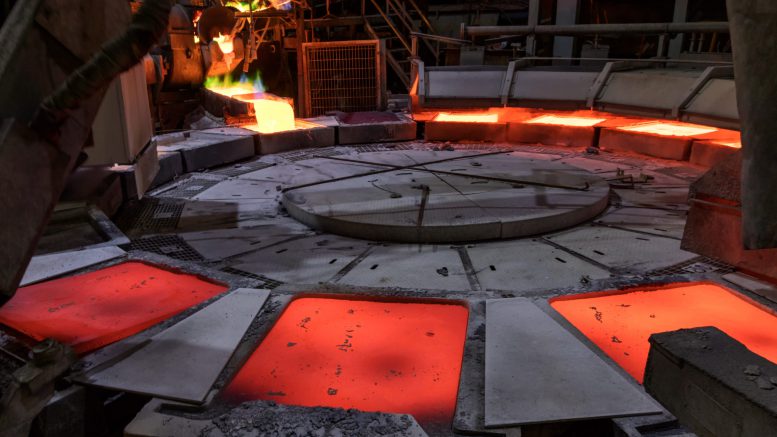You’d be hard-pressed to find anyone who’s overtly bullish on commodities right now. But that’s exactly why you should be taking notice.
Negative sentiment is opening up colossal buying opportunities because, relative to U.S. equities, the sector hasn’t been this cheap in more than 50 years!
Just take a look at the graph from Benchmark Intelligence below, comparing the GSCI Commodity Index against the S&P 500.

Source: Benchmark Intelligence
Now, note the two major lows in the 1970s and the late 1990s (circled). Each period marked a major cyclical bottom for commodity markets. From there, stocks embarked on a multi-year boom that extended across numerous commodities.
Now, switch your attention to the far right. As you can see, commodities have been languishing at record low levels for years. A monumental shift in global asset allocation is coming.
Despite mining stocks failing to ignite in 2023, you can’t ignore the massive opportunity here. Imagine buying U.S. tech stocks back in 2013, just prior to the record-breaking decade of outperformance. This could be the set-up that’s brewing for commodities as they hover around record-low valuations. And I’m not the only one peddling this narrative.
According to research released by Goehring & Rozencwajg, commodities are now at their most undervalued levels in 120 years! The only times we came close were back in 1929, 1969, and 1999.

Source: Bloomberg and G&R Models
Each of these periods was followed by a multi-year secular bull market that dramatically outperformed all other asset classes. According to Goehring & Rozencwajg, this cycle will be no different.
But as investment trickles back into the industry, one sector of the market requires a major injection of capital: mineral exploration, a high-risk, capital-intensive business with a low probability of success. That’s why investors are reluctant to get on board with the explorers.
But ending a 100-year reliance on fossil fuels requires major investment in new discoveries. Existing mines do not have the capacity to meet future demand.
Exploration activity and stock valuations mismatch
No doubt you’ve seen exploration stocks take a nosedive in recent months. The junior mining sector is hovering around multi-year lows. That’s despite the critical role this segment plays in boosting future supply. Yet despite depressed valuations, remarkably, activity is booming in Australia!
According to the latest data from Geoscience Australia, expenditures reached a record $4.05 billion last year. It contributed to the highest-ever annual drill volume of 11.7 million metres in 2022. That’s a record for the industry that’s even surpassed the peak from the last mining boom in 2011.
See for yourself:

Source: Geoscience Australia
So, herein lies the confusion. If exploration activity is hitting new highs, why are the explorers trading at all-time lows? Has the industry already peaked and entered a secular bear market? It seems unlikely.
It doesn’t align with Goehring & Rozencwajg’s findings that commodities are the most undervalued in 120 years. Nor does it align with Benchmark Intelligence’s data that shows commodities trading around historical lows relative to U.S. equities.
There’s a discrepancy between valuation versus activity on the ground. In booms gone by, rising stock prices aligned closely with higher rates of drilling. But that’s not happening in today’s market.
So, what’s going on?
Searching harder for deposits
Spending on exploration is delivering far less payback for the junior mining sector. It seems the business of finding deposits is becoming harder and more capital intensive.
Very few firms have chased down the exact number of new resources coming onto the market, however S&P Global tallied in their World Exploration Trends 2021 report. According to the report, discovery rates for gold and copper deposits have dropped markedly over the last 10 years.
There’s also been fewer new resource announcements. In 2020, there were just 52 — that marked a five-year low and a far cry from the 10-year high of 175 new deposits in 2012. It was also well below the average of 91 from 2011 to 2015. We’ll see how the numbers play out in 2022 and 2023, but the trend is down.
Drilling today offers far less payback than 10 or 20 years ago. That means vast capital investment is still needed to bring in more supply. Ultimately, that can only arrive via higher commodity prices.
So, how should you position yourself for this enormous come-back opportunity?
Obviously, the odds of picking a successful explorer are becoming more difficult. Discovering ore has always been like finding a needle in a haystack, except that needle has now been eroded, redeposited, and then buried again under hundreds of metres of sediment. In other words, this is becoming a seemingly impossible task across several important metals. Innovative technologies will certainly help, but major challenges await the industry.
It’s why you must be selective if you’re to have any chance of getting ahead in the minefield of exploration stock picking. Focusing on stocks with prospective ground, led by management with a proven track record of discovery, certainly narrows down the list.
But there is another strategy. Investing in developers already holding quality assets eliminates discovery risk, but it also comes with a premium.
Even then, developers face their own unique challenges. Building downstream processing facilities is capital- and labour-intensive, and it can take years to secure institutional investors willing to back a $1-billion development project.
So, why not step up the mining lifecycle and focus on producers? A problem arises here too, because mines are depleting assets. As thousands of tonnes of ore get extracted each year, the deposit shrinks, and so does its mine life.
To avoid this slow death, miners must keep hunting for replacement reserves. That often comes through acquisitions. But with rising commodity prices the premium on these deals goes up.
Producers also face daily operation risks. Any number of setbacks can break the company’s output guidance. A miss here, and the stock prices gets slashed.
Mining and exploration are risky businesses even at the best of times! But what if investors could capture future upside in the industry without taking on all these risks?
Enter mining services. From accommodation, equipment to mineral analysis, there’s many options available to investors looking to gain exposure to this sector. Targeting a stock with multiple clients over a host of different commodities is a sure way to diversify risk while remaining leveraged to the resource sector.
James Cooper is a geologist and mining analyst. Based in Melbourne, he’s now the resident commodities analyst at Fat Tail Investment Research and editor for the Diggers & Drillers Publication. You can follow him on X (Twitter) @JCooperGeo.





Be the first to comment on "Resource stocks ready for a comeback"